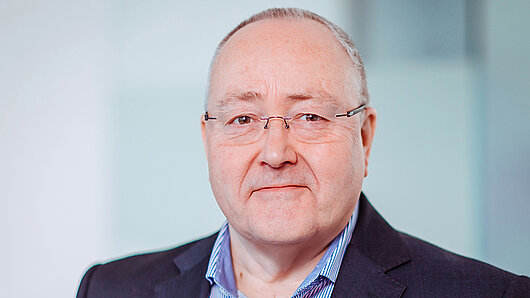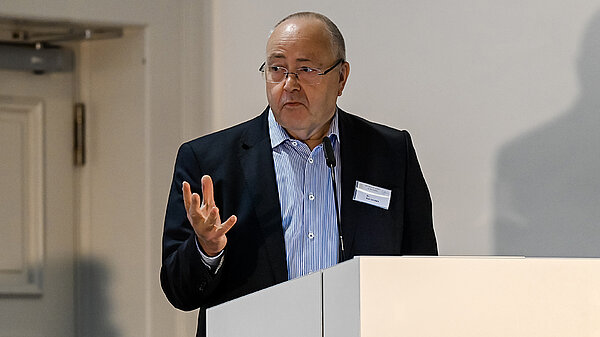High-Performance Computing Center Stuttgart

Another key figure in the Fortissimo story is Guy Lonsdale, CEO of scapos AG, a company that specializes in the marketing of software products. Originally trained in numerical mathematics, he has led the open calls for proposals to all of the Fortissimo projects, and is an evangelist for the opportunities that high-performance computing can offer to SMEs.
The launch of FFplus in 2024 marked a new chapter in the history of Fortissimo, as it invited SMEs for the first time to propose “Innovation Studies” focused on the development of artificial intelligence solutions, with an emphasis on generative AI. The project’s first two open calls received applications not only from traditional users of high-performance computing in the engineering and manufacturing industries, but also from a much wider range of industries, including finance, law, medicine, and journalism. In the following interview we talked with Lonsdale about the evolution and impact of the Fortissimo projects, as well as how artificial intelligence is opening the door to new user communities in high-performance computing centers.
Shortly after the financial crisis of 2008, the European Commission identified the need for a funding program to support European industry, and the manufacturing industry in particular. This led to the start of the Factories of the Future program. At that time they also realized that while large companies in the automotive and aerospace industries, for example, routinely use high-performance computing, SMEs face unique challenges and typically do not. They decided to create a program that reaches out specifically to manufacturing SMEs, which became the focus of the first two Fortissimo projects.
The Fortissimo concept was to support experiments in which SMEs could use HPC to address a business challenge. Although the concept has a research aspect, it's absolutely not about doing research, but rather demonstrating the advantages of using HPC in a commercial context. The most recent Fortissimo projects use what’s called “cascading funding” to provide financial support for the SME-centric consortia. The Joint Undertaking gives a grant to FFplus, and we run competitive open calls and select the best proposals using external experts. The winning companies receive funding and support, although FFplus doesn’t provide computing resources. The expectation is that the SMEs apply for computing time on large-scale systems through the JU’s access scheme.
In the end, the projects have an impact for the participants. At the same time the resulting success stories give Fortissimo ways to reach out to the wider ecosystem of potential HPC users. As I always say to small companies, if a similar SME used HPC successfully, it could be useful for you too.
In the beginning of Fortissimo, the primary use of high-performance computing in manufacturing was for modelling and simulation — areas like computational fluid dynamics, structural mechanics, and molecular modelling. In the project that immediately preceded FFplus, called FF4EuroHPC, we still saw a lot of modelling and simulation. At the same time, however, we also received applications for projects involving machine learning, artificial intelligence, and big data analytics. FF4EuroHPC still had an emphasis on manufacturing, but we included a special priority in the second call in order to reach an overall balance between manufacturing and other types of SMEs.
With FFplus two important things have changed. One is that we now have two very different types of sub-projects. The first type is classical Fortissimo, where SMEs that are new to HPC perform an experiment to show that they can use it to solve a business challenge. The other type focuses on technology development for artificial intelligence, specifically for generative AI, including the development or tuning of foundation models or large language models. Here, we’re looking at SMEs that are already proficient and have existing AI-driven business models, but they need access to large-scale European HPC resources to achieve the targets of their LLMs. In the first FFplus open call in 2024, we saw that the SMEs that are new to HPC are also very often focused on AI. The majority of applications were looking at AI alone or in combination with digital twins, which are driven by AI, combining machine learning and simulation.
The exciting thing about artificial intelligence is that it enables applications that are relevant for many sectors in industry and business. In our first open call we received applications from a wide range of fields and from a high number of European countries. For the Innovation Studies we targeted SMEs that have an existing business model linked to AI use or deployment. Together it makes for a colorful mixture. We have companies, for example, that are developing medical applications, and a number of companies from the worlds of finance and environment applied. We also have projects from the fields of information and communication technology and the media industry.
Some companies have AI know-how but haven't used HPC before, and recognize that access to large-scale computing resources would enable them to do more. Others are sticking their toe in the water with AI. They've heard that it could have an impact and know what they want to do. They get support partners who look at what they're doing so far and suggest potential next steps. For example, this could mean adding machine learning to their modelling and simulation approach to get faster or broader results.
Yes, absolutely. The National Competence Centers (NCCs) within the CASTIEL 2 and EuroCC 2 projects — projects that HLRS has been coordinating — have also contributed to this. In 33 European countries, each NCC is typically based at a high-performance computing center and connects HPC users with resources that can help them. The NCCs have a mission to reach out to SMEs in their home countries and are helping to generate a lot of the proposals for FFplus. Using the printed collections of success stories that have come out of the Fortissimo projects or videos that we have produced, they go to companies and say, “Hey, look at this. It is relevant for your business.” The success stories focus on things like speeding up a design or business process, or reducing costs, with an outlook for employing more people, or growing turnover. These are the business arguments for using HPC that are critical for SMEs.
When SMEs use HPC to do CFD simulations, for example, they need support to move to a large cluster or high-performance computer. Their questions include things like: How do I use this remote system? If I am running software remotely, how do I manage my jobs? What are the relevant licensing issues for using commercial software in this way? In a sense this is mostly IT system management more than HPC. In addition, SMEs that haven't done simulation in the past need someone with HPC experience, someone who understands the software that could be used, to understand their design challenge and take them by the hand. This also meant that after an SME’s Fortissimo business experiment was over it often needed continued support.

What we're now seeing is that many SMEs don't need much support. Many AI companies know exactly what they want to do and just need access to larger systems and help in finding the necessary resources. This is partly what FFplus does. We put them in touch with the right people to provide the necessary advice and support. And then in many cases the challenge is accessing the data that are necessary to train the software.
I do think that at this point we're very well known, not just at the level of the European Commission and in the EuroHPC Joint Undertaking, but also in the user community. The NCCs were very keen to get SMEs in their countries involved in the program because it's something that provides a lot of value. The SMEs that are applying are also clear about the potential benefits. The result is that we now have a large collection of success stories that explain the impact for a wide range of applications. And they are no longer just focused on doing crash simulations or aerodynamics, or classic big science like weather forecasting. To take just one example, we had a project in Montenegro that uses artificial intelligence on an HPC system to monitor the health of the animals on a poultry farm. Showing the impact and encouraging people to explore applications in new areas like this is probably our biggest success.
The winning sub-projects from the first FFplus open call just started, and we have two tranches of calls coming up, for a total of four more sub-calls. The current expectation is that the approach will not significantly change, but at the same time the rise of artificial intelligence means that high-performance computing is evolving very quickly. At the recent ETP4HPC conference there was a presentation by Dr. Franck Capello from Argonne National Laboratory explaining how large language models might be used as a research assistant in the future. The researchers would be freed from analyzing data and empowered to develop hypotheses and the experiments needed to verify those hypotheses. He also explained the capabilities of current LLMs for solving complex technical questions and, frankly, it was rather shocking. They are using LLMs to solve problems for which only a PhD student or a postdoc with expertise in that particular field could have matched their performance.
On the one hand, it’s easy to think that we’ve got another three years of FFplus before we have to think about what’s next. When I hear stories like these, however, three years seems like a long time. A lot could change.
For more information about FFplus, visit www.ffplus-project.eu.
— Interview by Christopher Williams
This interview was edited for clarity and readability.